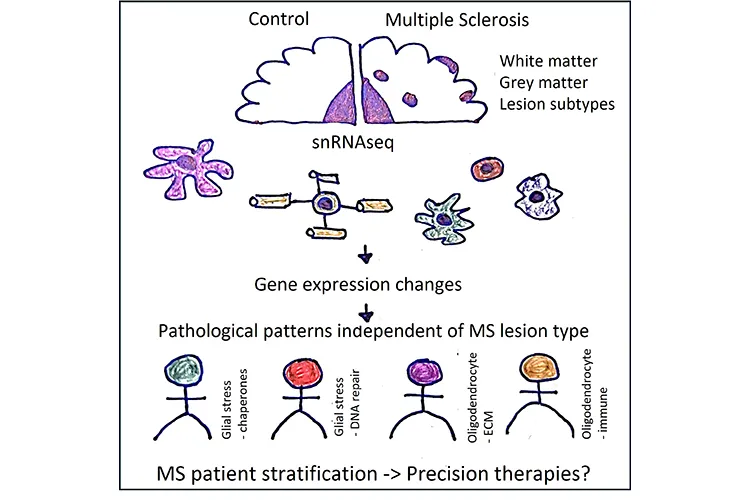One of the difficulties in finding effective treatments for MS is the huge diversity in how the condition affects people. This means that a one-size-fits-all approach to drug therapies is unlikely to be effective.
Now, an international research team co-led by Prof Anna Williams has worked together to create an "atlas of MS brain cells" – by looking at the largest-ever number of post-mortem brains generously donated by people with MS.
The researchers looked at the genes being expressed in the brain cells of people with MS using a highly sensitive technique called single-nucleus RNA sequencing (snRNA-seq). By analysing 632,000 samples from people with MS and healthy controls, they were able to identify four subgroups among the MS samples, each with a different pattern of brain cell responses to MS.
The researchers think that each group may indicate different underlying disease processes, and hence these people might respond to treatments differently.
Research like this could pave the way for more personalised treatment of MS. This means using information about an individual’s MS to tailor their treatment, rather than using a one-size-fits-all approach.
This is such an important discovery as it tells us that we can put people with MS into subgroups according to what’s going on in the brain at a molecular level. And these subgroups might respond to therapies differently.
So far, we have observed these subgroups using post-mortem brain tissue. To help treat MS, we need to work out how to group people with MS using blood tests. We could then design clinical trials specifically for these subgroups, which could help us get the right drugs to the right people.
Anna Williams, Professor of Regenerative Neurology at the University of Edinburgh
The paper was published by the journal Neuron. The work was partly funded by the MS Society via the Edinburgh Centre for MS Research. A full list of funders is available in the publication link below.
Related links
Read the scientific publication in Neuron (open access): snRNA-seq stratifies multiple sclerosis patients into distinct white matter glial responses. Macnair et al, DOI: 10.1016/j.neuron.2024.11.016
MS Society Edinburgh Centre for MS Research (University of Edinburgh website)


